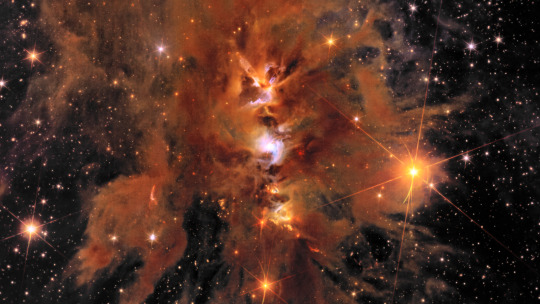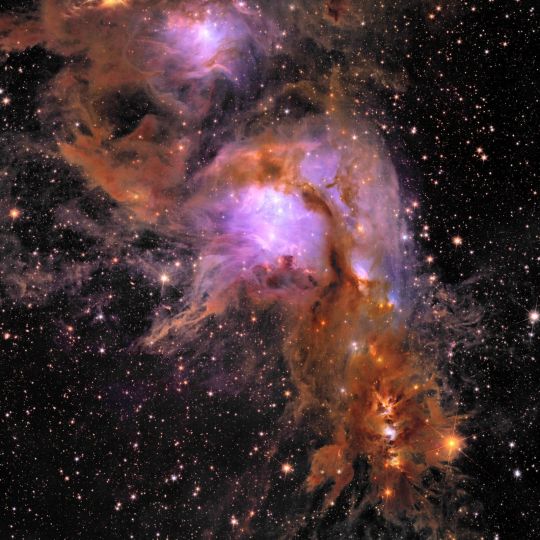Text

Wings of Stone
These uniquely winged hoodoos can be found in the Biste/De-Na-Zin wilderness (also commonly referred to as the Bisti Badlands) in New Mexico. 🇺🇸
70 notes
·
View notes
Text

"Messier 78"
A close up of the stellar nursery captured by the Euclid space telescope.
Image credit: ESA/Euclid/Euclid Consortium/NASA, image processing by J.-C. Cuillandre (CEA Paris-Saclay), G. Anselmi; CC BY-SA 3.0 IGO or ESA Standard Licence.
17 notes
·
View notes
Text

Euclid’s new image of star-forming region Messier 78,
A nebula that lies in the constellation Orion.
ESA / Euclid / Euclid Consortium / NASA; Image processing by J.-C. Cuillandre (CEA Paris-Saclay), G. Anselmi
23 notes
·
View notes
Text
Messier 62 - Globular Cluster

One of the densest and irregularly shaped globular clusters in our galaxy, probably due to it's proximity to the central bulge of our galaxy, which has been pulling stars from it.
It was the first globular cluster to find black holes at the centre, not just one, but many and some in binary partnerships.

These could in time combine to form an intermediate black hole, and start to resemble galaxies.

39 notes
·
View notes
Text

Hunter Green House by Danielle & Ely Franko Photo by @dirtandglass
Get Inspired, visit www.myhouseidea.com
630 notes
·
View notes
Text

MR FASHIONIST, Your daily dose of inspiration
585 notes
·
View notes
Photo

A Solar Filament Erupts, 2024-05-26
What’s happened to our Sun? Nothing very unusual – it just threw a filament. Toward the middle of 2012, a long standing solar filament suddenly erupted into space, producing an energetic coronal mass ejection (CME). The filament had been held up for days by the Sun’s ever changing magnetic field and the timing of the eruption was unexpected. Watched closely by the Sun-orbiting Solar Dynamics Observatory, the resulting explosion shot electrons and ions into the Solar System, some of which arrived at Earth three days later and impacted Earth’s magnetosphere, causing visible auroras. Loops of plasma surrounding the active region can be seen above the erupting filament in the featured ultraviolet image. Our Sun is nearing the most active time in its 11-year cycle, creating many coronal holes that allow for the ejection of charged particles into space. As before, these charged particles can create auroras.
Credits: NASA’s ‘Astronomy Picture Of The Day.’
19 notes
·
View notes
Text

Huose in Riodejaneiro, Brazil by @olsonkundig Photo by Maíra Acayaba
Get Inspired, visit www.myhouseidea.com
590 notes
·
View notes








